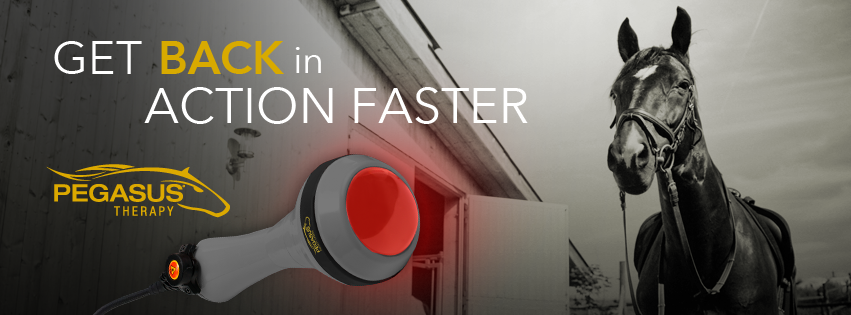Examining the Effectiveness of Laser Therapy in Horse Treatment for Injury Rehab
The assessment of laser treatment's performance in equine injury rehabilitation hinges on numerous elements, including healing time, discomfort mitigation, and cells regeneration. Veterinarians regularly observe premium end results with laser therapy contrasted to traditional techniques, placing it as a crucial element in equine care.
Recognizing Laser Therapy
Laser treatment has ended up being a pivotal tool in veterinary medicine, specifically in the treatment of equine conditions. Recognized for its non-invasive nature and efficacy, laser therapy includes the application of particular wavelengths of light to boost tissue repair service and lower swelling. This restorative modality is progressively favored for its capability to speed up the recovery procedure in equines experiencing a variety of musculoskeletal injuries and chronic problems.
The key system behind laser treatment is its ability to improve mobile functions. When laser light penetrates the skin, it is soaked up by mitochondria, the giant of cells, which causes raised production of adenosine triphosphate (ATP) This biochemical power increase assists in cellular repair service and regeneration. Furthermore, laser treatment advertises vasodilation, boosting blood flow and oxygen shipment to broken cells, thus expediting healing.
In equine medication, laser therapy is especially beneficial for problems such as tendonitis, osteo arthritis, and wound recovery. The method is admired for its pain-relieving residential or commercial properties, allowing steeds to regain flexibility and feature extra rapidly. Veterinarians additionally appreciate its marginal adverse effects compared to other treatment methods, making it a reputable and safe option for equine care.

Just How Laser Treatment Functions

Upon absorption, these photons cause a collection of biochemical changes, enhancing mitochondrial feature and causing enhanced adenosine triphosphate (ATP) manufacturing. This increase in ATP accelerates mobile metabolic process, promoting cells repair service and regeneration. In addition, laser treatment modulates inflammatory feedbacks by impacting cytokine levels and lowering oxidative anxiety, thus minimizing pain and swelling.
An additional substantial aspect of laser treatment is its duty in improving microcirculation. The treatment promotes vasodilation, boosting blood flow and oxygen delivery to broken tissues (Equine Therapy). This promotes the removal of cellular particles and sustains the proliferation of fibroblasts and collagen synthesis, critical for wound recovery
Medical Evidence
The effectiveness of laser therapy in equine therapy has been confirmed with various clinical researches, showcasing its restorative possible across a series of problems. Several regulated trials and observational researches have documented considerable web renovations in cells repair service, pain reduction, and general recovery timelines. As an example, a research study conducted by Turner et al. (2012) demonstrated that equines treated with low-level laser treatment (LLLT) for ligament injuries exhibited sped up recovery compared to those receiving traditional treatments. The research study highlighted a marked reduction in inflammation and improved collagen formation.
Similarly, research by Johnson and colleagues (2015) concentrated on equine muscle injuries, revealing that laser treatment considerably sped up muscle fiber regeneration and lowered muscular tissue rigidity. These searchings for were supported by histological evaluations showing improved see it here muscle mass cells company. In addition, scientific analyses have actually shown that laser therapy can alleviate persistent conditions such as osteoarthritis. A study by Smith et al. (2018) reported that steeds with osteoarthritic joints experienced notable pain alleviation and increased series of activity following a program of laser treatment sessions.
Veterinarian Insights

Veterinarians also appreciate the adaptability of laser therapy. It can be utilized for a vast array of problems, from surface injuries to much deeper bone and joint injuries. Dr. Emily Brown highlights its energy in dealing with problems like tendonitis and osteo arthritis, where standard treatments typically fail. She mentions that laser treatment can be customized to the certain requirements of each equine, guaranteeing ideal results.
Furthermore, veterinarians value the capacity to incorporate laser therapy with various other therapy techniques. This multimodal method can enhance total therapy efficacy, supplying a comprehensive remedy for equine recovery. Such endorsements from skilled specialists highlight the growing approval and application of laser therapy in equine medication.
Practical Considerations
A key facet of implementing laser therapy in equine treatment entails comprehending the practical factors to consider that ensure its efficiency and safety. Most importantly, it is vital to select the ideal laser device, as numerous types vary in wavelength, power, and penetration depth. Equine Therapy. Veterinarians need to be well-versed in these specifications to customize treatment procedures effectively to every injury kind
Furthermore, the regularity and duration of laser therapy sessions require mindful planning to take full advantage of healing benefits while decreasing any prospective damaging effects. Constant surveillance of the horse's reaction to therapy can guide required modifications in the treatment regimen. Establishing a secure and regulated environment throughout therapies is additionally vital to stop accidental exposure to laser discharges, which could hurt both the steed and the trainer.
Educating and certification view publisher site of workers carrying out laser treatment are paramount to ensure proper method and to maintain safety requirements. Furthermore, keeping exact documents of each session, consisting of laser setups and observed results, is crucial for reviewing the total effectiveness of the treatment and for making data-driven choices.
Verdict
Laser treatment has actually become an effective modality in equine injury rehabilitation, providing considerable benefits in recovery time, pain alleviation, and cells recovery. Scientific researches highlight considerable enhancements in conditions such as tendonitis and osteoarthritis, associated to enhanced cellular feature and boosted ATP production. Veterinarian monitorings prove these findings, highlighting exceptional outcomes contrasted to standard therapies. For optimal outcomes, constant tracking and individualized therapy procedures stay important in leveraging the full possibility of laser treatment in equine treatment.
Comments on “Whatever You Required to Find Out About Equine Therapy for Mental Health”